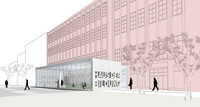
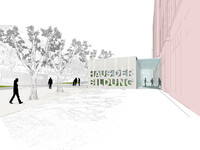
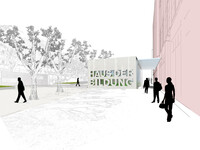
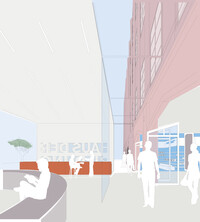

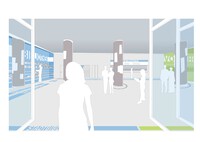
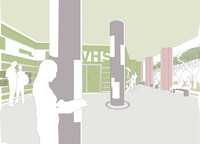
Bert Brecht House of Education - Redesign
Transitions. Learning and reading presuppose openness of thought. How is that possible in a meaningful space that sets strict boundaries? We offer a place for the formation of fully open relationships - between outside and inside, city and building, open space and architecture. Entrances should be imperceptible and natural, rooms should flow into one another. Park, pavilion, foyer and passage can be switched differently depending on requirements. Am I still in the public space or already in the House of Education, outdoors or indoors? Boundaries are made by no thresholds
Pavilion. The generous space is the interface to the city. Media, café and Internet access are merged into a landscape that enables authentic information access. In summer, the room boundaries to the park can be removed for temporary outdoor events - what remains is a roof. Functional relationships between delivery and fire brigade passage are maintained despite the expansion into the park.
Passage. A glass passage leads through the House of Education and optically exposes the monument. Depending on the spatial perspective, it is an access or passage area, a connection between internal functions or a penetration of the city and the building. The structurally open system offers users the opportunity to assemble their space themselves according to their requirements and to feed back during use: between the 24-hour opening of the passage until it is closed after the House of Education is closed, all options remain open to users.